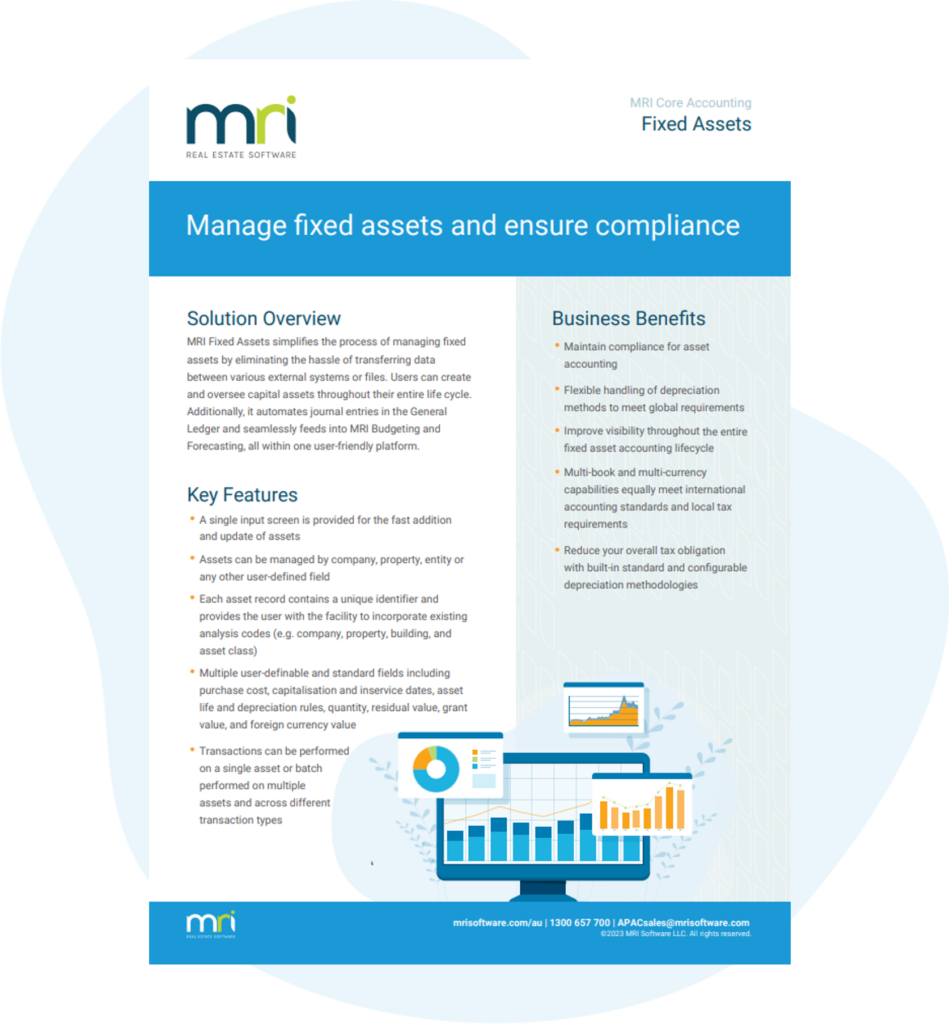Become a fixed asset management master by avoiding these 5 common failures
A window into your system
There are common failures that often occur with fixed asset management, largely due to ineffective systems or policies. However, the common mistakes that many organisations experience don’t need to be a re-occurring factor in your management. Each of these problems has a solution that can easily remedy the situation.
Understanding the top five failures that can occur when managing fixed assets allow us to offer effective resolutions for each.
Failure 1: Using spreadsheets
Nearly all spreadsheets contain errors, which is to be expected with information entered without effective controls. Whether it is because of incorrect background asset data or a wrong formula, there’s little doubt that information you pull from the spreadsheet, such as depreciation calculations, is likely to be inaccurate.
Spreadsheets allow for several different types of errors to occur, thereby making it difficult to ensure precision and accuracy. Additionally, several people within one accounting department will often access, manage and edit the same spreadsheet, which can compound the likelihood of errors.
Not only does access by more than one person cause potential for additional errors, but it also removes the ability to maintain an audit trail and overall security. With spreadsheets, you are unable to track actions made by users. Besides the probability of being error prone and lacking security, spreadsheets are also:
- Unable to accommodate ‘parent/child’ relationships, making it challenging to accurately track and manage these important hierarchical dependencies.
- Ineffective in meeting historical reporting and forecasting environments, because of the complexity required by these reports and the inability to rely on the data.
- Unable to export information directly into government forms, requiring them to be filled out manually and risking incorrect transcription.
By going from spreadsheet to software, you can eliminate many of the errors that the use of spreadsheets cause. For example, depreciation formulas and assets can be defaulted for each book, based on any defined asset category, which will help remove depreciation errors. Processing depreciation in a specialist system, rather than spreadsheets, is faster and easier. With a specialist Fixed Asset Management system, it can be completed with just one click of a button. It will also provide the structure to link ‘parent/child’ assets, set up security for all users, and offer the ability to run standard and customisable reports.
Failure 2: Not completing a proper physical audit
The credibility of an organisation’s data (the existence of assets and its Net Book Values) will be in question if it cannot be verified.
Verifying what an organisation owns and the whereabouts is essential for credibility. A physical audit is also an effective asset management procedure that can help ensure assets are insured at the correct level, maintenance is accurately budgeted for and unexpected ‘write-offs’ are avoided.
Physical audits are essential to clean up the variances between what is being financially accounted for on the asset register and what is present. The potential risks of not conducting a physical audit include:
- Inaccurate physical verification of assets can render the asset register unreliable.
- Depreciation could be allocated to the wrong company/cost centre/department/division
- Depreciation could be misstated resulting in over or under payment of taxes
- Missing assets (potential theft problem) could go undetected
- The audit trail of transferred assets can be lost
- Assets could be under or over insured
- Exposure to accounting audit write-up
An organisation can avoid these risks by implementing formal physical audit policies and procedures along with a supported asset tracking system which will help control and manage the fixed asset register. Barcode tracking technology can help reduce the time and money spent managing assets, making proper physical audits quick and simple to carry out.
Failure 3: Unauthorised changes are occurring
There are two ways in which unauthorised changes can occur and cause problems. The first is unauthorised access to the system and the second is not having the correct procedure in place for changes to asset events.
Security of data is critical to compliance for corporate governance regulations. To avoid unauthorised changes occurring in your organisation’s fixed asset register, security should be defined at user level to ensure that confidential information can be viewed only by those who need to see it. Individual or group access rights should be designated according to an organisation’s specific requirements. This cannot take place with spreadsheets, so a specialist system is essential for this security.
A well-planned transfer and disposal process plays a key role in effective asset management. An automated procedure that allows multi-user approval can help streamline processes and afford time and costs savings while ensuring the accuracy and accountability of the asset register. Using a specialist system with event request authorisation functionality allows users to create a transfer or disposal request which is then sent to a pre-determined supervisor for approval, thereby allowing organisations to ensure all changes made to the asset register are authorised.
Failure 4: The lack of a centralised asset system and processes
Many organisations utilise a mix of different systems across departments and with increased pressure on organisations of all types to do more with less, communication and transparency between departments is an important part of streamlining business processes. A central asset register can not only help simplify asset maintenance, but it also provides that desired increased transparency and easier communication.
The register can be accessed and viewed across multiple departments including asset management, finance, IT, estates and maintenance, providing all the information required in a consistent and easily accessible format.
Sharing asset information in this way can deliver increased efficiencies and direct financial savings. For instance, the lifecycle of equipment and its maintenance can be effectively tracked and managed using a central system so that optimum value is obtained from the investment. This can include deployment, service and disposal of assets at the appropriate time.
“MRI’s Fixed Asset Management is a single source of truth, consolidating reporting across multiple companies and books in one for ease of use”
Failure 5: Poor reporting or lack of reporting
Composing reports and forecasts can be a lengthy, laborious and costly process that is often subject to human error if conducted by hand. Bad reporting can also affect organisations by:
- Misinforming management of information that is critical to business decisions.
- Causing non-adherence with compliance issues, resulting in the consequences mentioned above.
- To avoid unreliable reports for your fixed assets, it is best to use a reporting tool in a specialist fixed asset system. Typical reports available in specialist systems that will help your organisation include:
- A fixed asset balance sheet. This report consolidates starting points and ending points of the month and shows all the month’s activities
- Events. The reports show all transfers, disposals and revaluations that have occurred in the given time.
- Audit History.
To become a true asset management expert, it’s important not to disregard the importance of fixed asset management. Each of the five failures above can cause costly and sometimes legal penalties. The best way to avoid failing is to implement a specialist fixed asset management system with standard processes and procedures for your organisation to follow. With the proper rules and tools, fixed asset management can be fast, effective and simple to use.
| Book a demo |
Streamline Fixed Asset Management and Maintain Compliance
Experience the simplicity of overseeing your fixed assets with MRI Fixed Asset Accounting. Our intuitive platform reduces data transfer complexities across systems, ensuring smooth asset management for their entire lifecycle. Enhance your MRI platfor…

